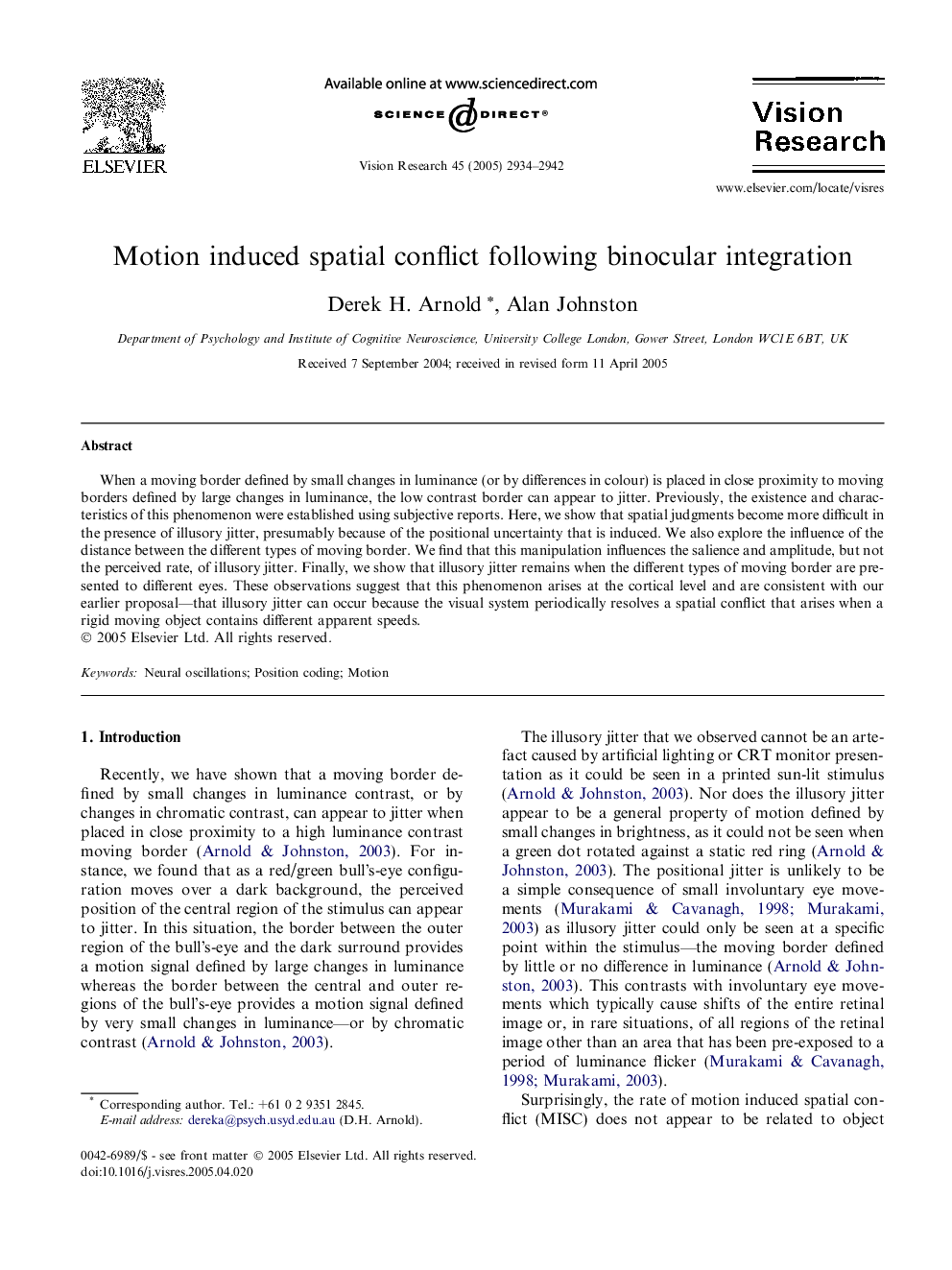| Article ID | Journal | Published Year | Pages | File Type |
|---|---|---|---|---|
| 4035528 | Vision Research | 2005 | 9 Pages |
When a moving border defined by small changes in luminance (or by differences in colour) is placed in close proximity to moving borders defined by large changes in luminance, the low contrast border can appear to jitter. Previously, the existence and characteristics of this phenomenon were established using subjective reports. Here, we show that spatial judgments become more difficult in the presence of illusory jitter, presumably because of the positional uncertainty that is induced. We also explore the influence of the distance between the different types of moving border. We find that this manipulation influences the salience and amplitude, but not the perceived rate, of illusory jitter. Finally, we show that illusory jitter remains when the different types of moving border are presented to different eyes. These observations suggest that this phenomenon arises at the cortical level and are consistent with our earlier proposal—that illusory jitter can occur because the visual system periodically resolves a spatial conflict that arises when a rigid moving object contains different apparent speeds.
